Transform your outdoor space into a tranquil Italian garden with rustic elements that add charm and character. With the right design, you can create an inviting atmosphere for entertaining friends and family or simply enjoying some peaceful alone time. A rustic Italian garden is easy to achieve with a few simple touches that bring the old-world feel of Italy to life in your own backyard. From classic terra cotta pots filled with fragrant herbs to ornate wrought iron furniture, these ideas will help you craft a beautiful outdoor oasis inspired by the best of Italy’s countryside gardens.
Origins Of The Italian Garden
The Italian garden has its roots in the romantic gardens of Ancient Rome. The gardens were a reflection of power and status, often filled with sculptures and fountains, as well as plants that produced fragrant scents. As time passed, the Italian garden evolved through different eras to become more stylized and sculpted into geometrical shapes. By the Renaissance era, formal Italian gardens were designed to be viewed from above, creating a sense of perspective and symmetry. Also popular during this time were gardens known as “boccascena,” which featured terraced views, pathways lined with potted plants, and fountains or pools.
These were inspired by English-style parks with winding pathways and lush vegetation.Characteristics Of The Italian Garden
Theme
The Italian garden theme is characterized by its emphasis on rustic elements and relaxed atmosphere. This type of garden relies heavily on natural materials such as stone, wood, and clay to create a warm and inviting space.

These materials are often incorporated into pathways, fountains, benches, pergolas, and other structures. Plants play an important role in Italian gardens, with Mediterranean plants like lavender and rosemary commonly seen.
Design
Italian garden designs tend to be informal and asymmetrical, creating a sense of balance without perfect symmetry. Curved pathways often lead the way through the space, while circular or rectangular beds may contain brightly-colored flowers that add pops of color. Potted plants and trellises can also be used to add layers of foliage. Finally, water features – such as fountains, ponds, or streams – are often integrated into the design, creating a tranquil atmosphere.
Furnishings
In order to stay true to the Italian garden’s rustic theme, furnishings should be kept simple and natural. Stone benches, wrought iron chairs, and wooden tables are all great choices for the space. Other accessories that work well in an Italian garden include terracotta planters, lanterns, and statues. These pieces can help bring the outdoors in and create an inviting atmosphere for entertaining or relaxing.
Lighting
Good lighting is essential for any outdoor space and the Italian garden is no exception. String lights hung from trees or over pergolas create a warm, romantic ambiance, while strategically placed wall sconces can help to highlight specific areas of the garden. Pathway lighting also helps illuminate walkways and make outdoor areas more functional at night.
Accessories
Finally, a few simple accessories can add the finishing touches to an Italian garden. Wind chimes, weather vanes, and bird feeders are all great choices for the space.
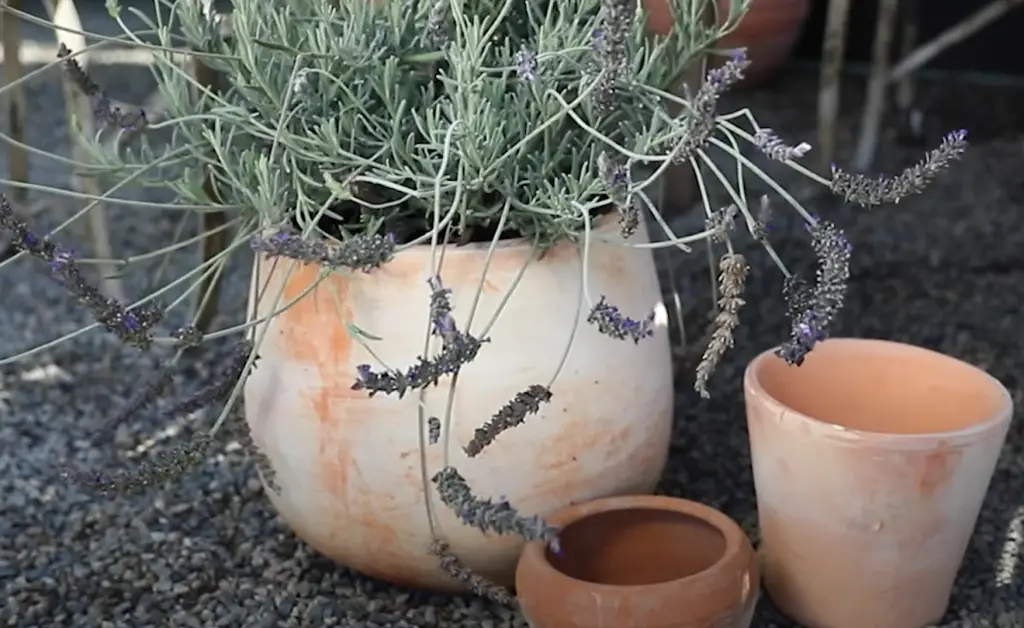
These pieces help to create a unique atmosphere and draw attention to the garden’s beauty. A few strategically placed bird baths can also attract colorful birds to the area. [1]
Why Are Italian Style Garden Ideas So Iconic?
Italian style garden ideas have become iconic due to their use of traditional and rustic elements. Stone paths, terra cotta pots, and wrought iron furniture are all staples of the Italian style landscape. The gardens often feature a combination of native plants as well as exotic varieties from around the world. This blend creates a beautiful and unique setting that speaks to the culture of Italy. In addition, Italian style gardens are known for their beauty and charm, providing a sense of serenity and relaxation for those who visit them. As such, they have become very popular among gardeners and homeowners alike. With its classic look, an Italian style garden is sure to be admired by all who take the time to appreciate it. [2]
Garden Ideas To Steal
Italian gardens are known for their rustic, romantic charm. They typically feature a combination of natural elements – from stone and brick pathways to trees, trellises and flowers chosen for their seasonal blooms. There are certain design principles that have been used in Italian gardens throughout the centuries, but with a little creativity you can create a garden that’s uniquely yours. Here are some ideas to get you started:
Make An Entrance
A rustic Italian garden should be welcoming and make a statement. Think about adding an arched entryway into your garden, complete with stone columns that are adorned with climbing vines or fragrant flowers. This will help set the tone for the rest of your garden and ensure that guests feel welcomed as they enter this outdoor haven.
Scent The Air With Citrus
Adding some citrus trees to a rustic Italian garden can make for an inviting and fragrant atmosphere.
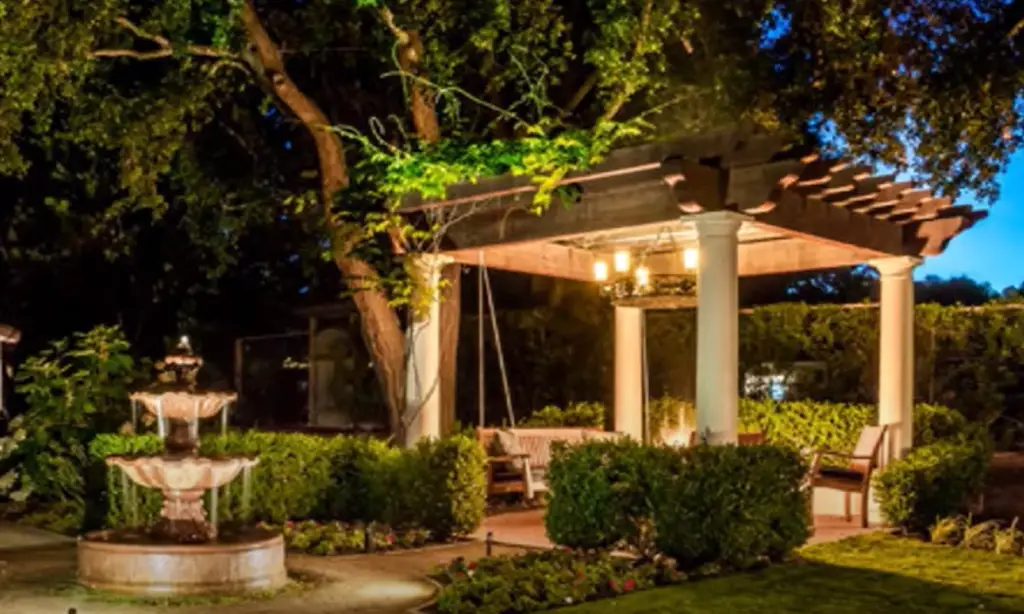
Lemon, lime, and orange trees are all popular in Italian gardens, as they are both decorative and edible. Before purchasing any plants, it’s important to check the local climate to ensure that they will flourish in your area. Additionally, citrus trees need plenty of sunlight and regular watering. Once established, they can provide a beautiful backdrop to your garden and add wonderful aromas.
Build A Pergola
Pergolas are a great addition to any Italian-style garden. Not only do they add beauty and architectural interest, they also provide an inviting spot to sit and enjoy the outdoor space. Pergolas can be built from treated woods or wrought iron for a more rustic look. Choose plants that climb up the pergola’s posts for a lush, romantic feel. Bougainvillea and clematis both thrive in warmer climates and will provide plenty of color and texture as they grow.
Invest In Planters
Adding planters to your rustic Italian garden can help bring the feeling of Italy into the space. Investing in a few large, terracotta pots for plants and herbs is an inexpensive way to add texture, color, and Mediterranean-inspired charm. You can place these planters around the garden or even use them as edging along pathways. The key to making your planters look authentically rustic is to choose pieces that are imperfect and have a worn, aged patina.
Line Up The Statuary
Statues are a classic and delightful way to bring personality and charm to an Italian garden. Place statues in the garden’s focal points, like entryways or a seating area. Look for pieces that emphasize traditional Italian aesthetics, such as angels, cherubs, and Madonna-inspired figures. For more contemporary style gardens, try finding sculptures that reflect art nouveau, minimalism, and abstract elements. Use statuary to enhance a path or line it up along the edges of an elevated patio. Be sure to consider size when selecting pieces—a piece that’s too large will stand out in an awkward manner and detract from the beauty of your garden. Incorporate statuary in a way that makes them look like they’re part of the landscape. [3]
Plant A Pine Grove
Bring the Italian countryside right to your home with a pine grove. Set up an area of your garden with evenly spaced, tall pine trees to mimic the look of an Italian forest. Plant flowering shrubs and groundcovers around the base of the trees for added color and texture.
You can also place outdoor furniture or other decorative touches, like a stone fountain, in the grove for a pleasant spot to relax and enjoy your garden.Select Tough Plants
When creating a rustic Italian garden design, it’s important to select plants that can withstand the sometimes harsh conditions of the Mediterranean climate. Look for drought-tolerant and low-maintenance plants such as lavender, rosemary, thyme, oregano, sage, bay laurel and other herbs. These fragrant and hardy plants are also excellent for cooking.
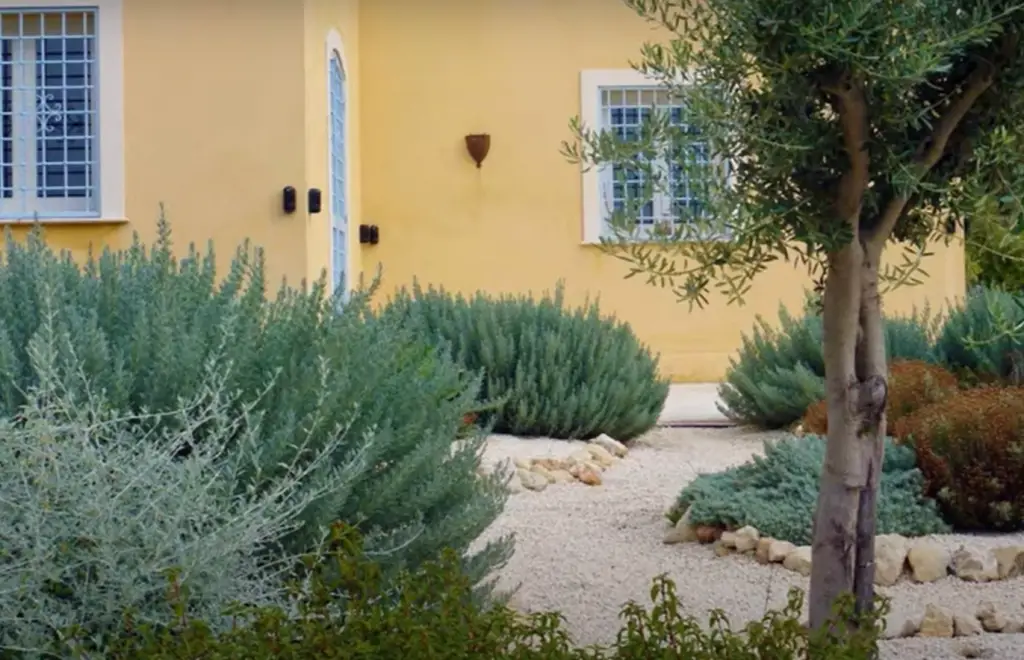
Consider adding succulents, such as prickly pear cactus and agave, for a pop of color and texture to your garden. Flowering plants like lavender, irises, sunflowers and daisies are perfect for adding some vibrant shades to the garden. For taller elements, evergreen trees such as cypress and olive trees can provide a classic Italian flavor. You can also add fruit-bearing trees like figs, oranges and lemons to your rustic garden.
Think Symmetrically
One of the defining characteristics of Italian gardens is symmetry. Symmetry in design creates a sense of formality and draws the eye to the center of the garden. To create a symmetrical Italian garden, you can use hedges, trees, or walls to divide your outdoor space into distinct areas. Consider planting shrubs and other plants that will create a sense of balance and harmony in the garden. A symmetrical Italian garden is often done with a central focal point such as a fountain or statue that is surrounded by smaller features like bushes and potted plants.
Plant Climbing Roses
Climbing roses are a classic choice for an Italian garden. They add an air of romance and whimsy while providing the perfect backdrop to any outdoor space. Planting climbing roses in your rustic Italian garden can give it a touch of old-world charm, especially if you grow them against a wall or trellis.
Additionally, adding a water feature near the roses can help keep them healthy and looking beautiful all season long. [4]FAQ
How do I make my backyard look Italian?
There are a variety of ways you can make your backyard look Italian. Incorporating rustic elements such as terracotta planters, wrought iron furniture, and stone pavers is a great way to give a space an Italian feel.
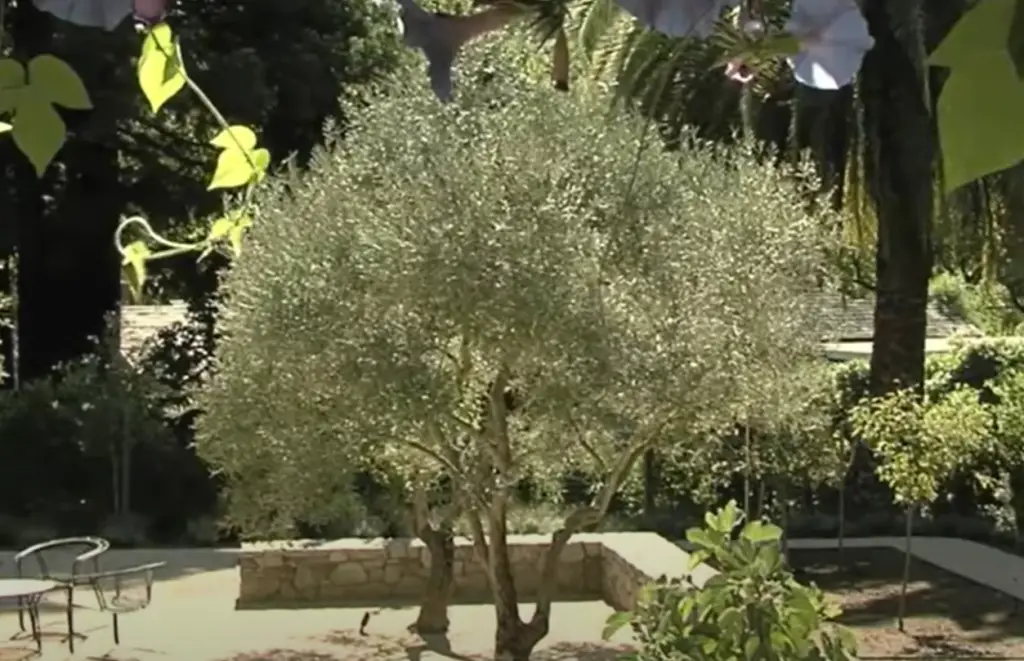
Adding herbs like oregano, basil, rosemary, and sage will fill the air with classic Mediterranean scents. You could also add traditional elements like a gazebo, pergola, or fountain to give it an even more authentic Italian look. Also, don’t forget to include plants and flowers that are typical of the Italian climate, such as cypress trees, lavender, and sunflowers. However, the best way to give your Italian garden an authentic touch is by using Italian tiles and stonework.
How to design an Italian garden?
Creating an Italian garden can be a fun and rewarding project. Whether you’re starting from scratch or giving your existing garden a makeover, there are several elements that go into designing the perfect Italian garden. One of the most important aspects to consider when creating an Italian-inspired garden is incorporating rustic touches. Items such as old stone or brick pathways, aged urns, and wrought iron gates can instantly add a rustic flair to your outdoor space. The next step is choosing the right plants for your Italian garden. You’ll want to select plants that are hardy enough to withstand the climate of your region, but also have an Italian flavor to them. Plants such as olives, lavenders and flowering shrubs can create a perfect Tuscan-style setting. A few well placed trees or an arbor covered in ivy or grape vines will bring the Italian look together even more. To complete the look of your Italian garden, include items that have been repurposed from your home or from antique shops. A metal trough can be used to hold a variety of plants, while an old window frame could make for an excellent trellis.
What are the elements of a traditional Italian garden?
Traditional Italian gardens are often inspired by the grand Renaissance gardens of Italy, with a focus on symmetry, structure, and formality. The elements that make up these gardens often include clipped hedges or topiary trees, symmetrical paths or walkways lined with statues and ornamental fountains, flower beds in bright colors and textures, and a mix of evergreen and deciduous plants. Also common are-style terraces, balconies or loggias, andgolas covered with climbing plants. However, in recent times there has been an increased focus on more rustic Italian gardens that embrace the natural environment and bring it into the garden.
What plants to put in an Italian garden?
When designing an Italian garden, it’s important to fill the space with plants that are associated with Italy. Consider incorporating these traditional plants into your Italian garden:
- Olive Trees: The olive tree is a symbol of peace in Italy and can make a great addition to any Italian-themed garden. Not only are they beautiful, but they also provide delicious olives that can be harvested and used in Italian cooking.
- Lavender: Lavender is a fragrant herb commonly found in Italian gardens. It has many benefits, including attracting bees and other pollinators to your garden as well as providing a pleasant smell throughout the area.
- Rosemary: Another common plant in Italian gardens is rosemary. It’s known for its aromatic leaves and can be used in cooking as a seasoning, or just to add some greenery to your garden.
- Cypress: These tall, stately trees are a classic symbol of Italy and make an impressive addition to any Italian garden. Not only do they provide height, but they also provide shade and privacy in your outdoor space.
- Oregano: This fragrant herb is often used in Italian cooking and can be grown easily in an Italian garden. Not only does it add flavor to recipes, but its pleasant scent will fill your garden with a wonderful aroma.
What is the traditional Italian flower?
The traditional Italian flower is a sunflower. Sunflowers are one of the most beloved symbols of Italy and they are found all over the country. They symbolize joy, happiness, and positivity, making them the perfect addition to any rustic Italian garden.
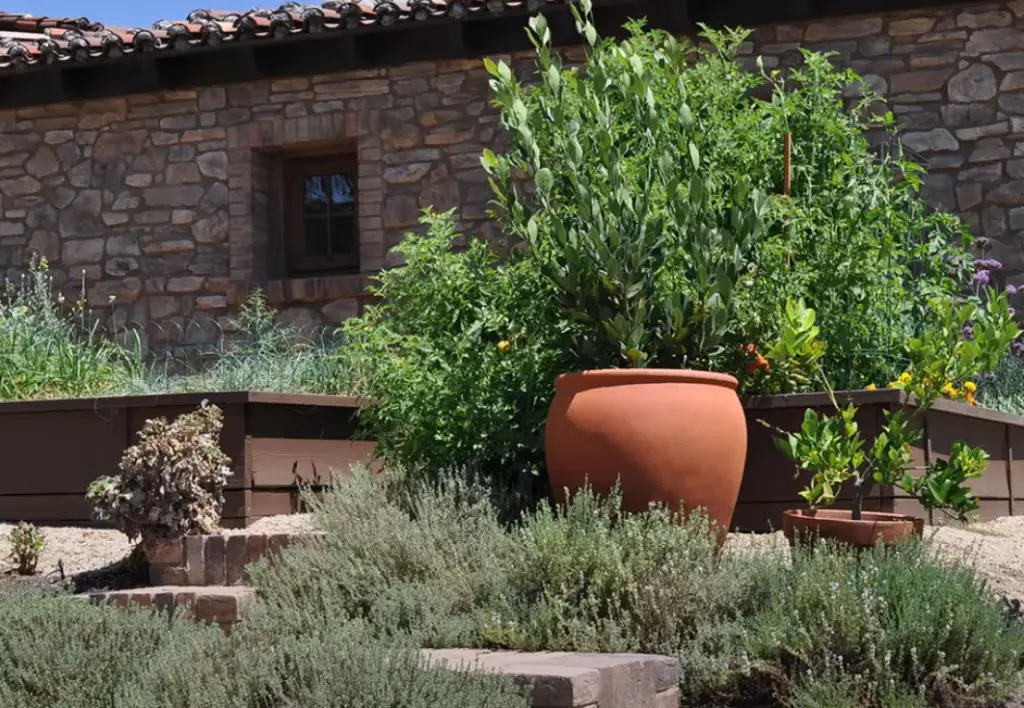
Other flowers that are native to Italy include daisies, carnations, and forget-me-nots. If you want to add a bit of Italian charm to your garden, these are some great flowers to consider. Also, herbs like rosemary, oregano, and basil are essential to any Italian garden as they are often used in Italian cooking. By planting these herbs you will be able to create a true Italian experience right in your own backyard!
How to look like an Italian local?
- Invest in a terracotta pot for your outdoor space that is at least 15 inches in diameter and 12 inches deep. Position it in the center of your garden to add an Italian flair.
- Plant Italian-inspired plants such as rosemary, bay laurel, lemon balm, oregano, sage, fennel, and thyme. These will add a wonderful aroma to your garden, as well as color and texture.
- Consider adding an outdoor seating area with bistro-style chairs and table for relaxing in the garden.
Hang Italian ceramic tiles on a wall or fence to brighten up the space and provide more of an Italian countryside feel. - Decorate the area with Italian-style planters, trellises, and sculptures to give your garden a more rustic and authentic look.
- Make sure to include plenty of blooming flowers such as sunflowers, daisies, lavender, marigolds and poppies for beautiful pops of color.
- To finish off the look, consider adding a water feature such as a fountain or birdbath to create an inviting and complete Italian garden aesthetic.
What is the principle of the Italian garden?
The Italian garden has been a popular style of outdoor space for centuries, and its key principles are still relevant today. The main focus is creating a sense of balance and harmony between the elements in the garden. This includes using symmetrical shapes and forms, such as circles or squares that can be easily repeated throughout the design. Texture is also important, and is achieved by using a variety of materials from stone to wood, metal to plants. Plants are used liberally throughout the garden, often with evergreens taking centre stage. The Italian garden also makes use of water features such as fountains or pools for added interest and beauty. It’s important that these features are carefully chosen for optimal visual impact, and should be in scale with the overall garden design. The Italian garden is also known for its rustic charm and relaxed atmosphere. This can be achieved through the use of distressed furnishings, weathered stone walls and planters, or other vintage pieces that add a unique character to your outdoor space.
How do you make a Tuscan garden?
Creating a Tuscan garden involves incorporating certain elements that are common to the Italian countryside. To start, choose plants with warm colors like lavender, sage and rosemary, which will evoke the rustic feel of Italy. Blooms such as poppies or sunflowers add vibrant pops of color throughout your garden. You can also add terracotta urns and statues for a classic, antique feel. For the hardscaping your garden, consider using cobblestones or bricks with a winding pattern to give it an old-world charm. Finally, don’t forget the lighting—lanterns or string lights create an intimate atmosphere for outdoor entertaining. However you design it, your Tuscan garden will be a special place to relax and enjoy the beauty of nature.
What makes a design Italian?
When it comes to Italian garden design, nature and the environment are key. Italians have a long history of gardening and enjoy incorporating timeless elements such as terracotta pots, stone sculptures, and colorful blooms into their outdoor living spaces. Designers often make use of organic shapes like circles or winding curves in their gardens—these forms mimic natural elements and create a sense of harmony. To bring out the rustic beauty of an Italian garden, incorporating natural materials such as wood and stone is essential.
What is the Italian garden style?
The Italian garden style is a type of landscape that emphasizes classical and traditional elements, usually with a symmetrical layout and featuring ornamental features such as fountains and statues. This style has been popular in Italy since the Renaissance period and is still used today to create beautiful outdoor spaces. It typically includes natural materials, terraces, pathways, and hedges, as well as vibrant flowers, herbs, and shrubs. Also known as the Italianate garden, this style is great for creating a peaceful and romantic atmosphere.
Useful Video: Rustic garden design ideas
Conclusion
Creating a rustic Italian garden is a great way to bring the beauty and charm of Italy into your own backyard. By incorporating traditional elements such as terra-cotta containers, colorful flowers, gravel pathways, and natural stone or wood accents, you can create an outdoor space with an old-world feel. With careful planning and attention to detail, your rustic Italian garden will be sure to create a relaxing and inviting atmosphere for you and your guests. Whether you opt for a more lush and colorful design or prefer a simple and serene look, adding an Italian flair to your garden can help make it truly unique.
References:
- https://www.gardenista.com/posts/10-garden-ideas-steal-italian-coast/
- https://www.thespruce.com/what-is-an-italian-garden-5189008
- https://www.gardenia.net/guide/tips-to-create-an-italian-garden
- https://www.gardeningchannel.com/how-to-plant-italian-garden/





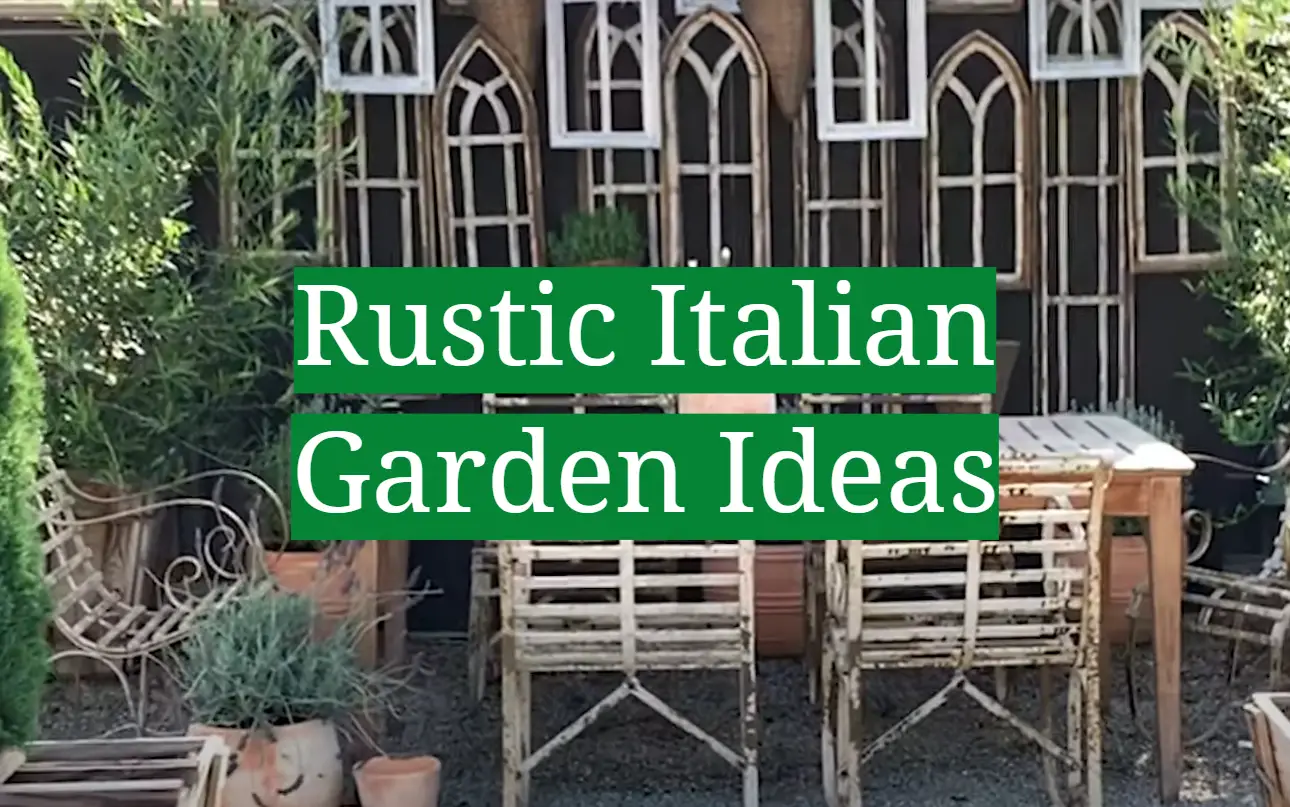
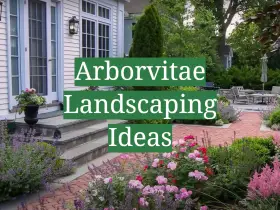



Leave a Reply
View Comments